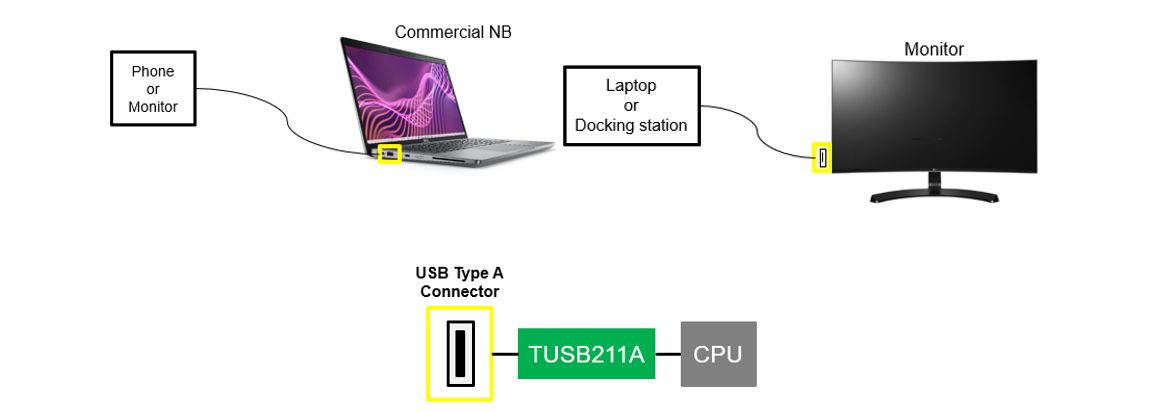SLLA454A April 2019 – August 2024 TUSB211A , TUSB212 , TUSB213 , TUSB214 , TUSB215 , TUSB216 , TUSB217A
- 1
- Abstract
- Trademarks
- 1 Introduction
- 2 USB 2.0 Signal Integrity Challenges
- 3 Choosing to Use a USB 2.0 Redriver
- 4 Redrivers in Automotive
- 5 Redrivers in Enterprise
- 6 Redrivers in Medical
- 7 Re-drivers in Personal Electronics
- 8 Re-drivers in other applications
- 9 Facilitating Easy Use of TUSB211A Using the TUSB211PICO-EVM
- 10Summary
- 11References
- 12Revision History
7 Re-drivers in Personal Electronics
As developers of personal electronics are upgrading to higher speeds including USB3/4 for data transfer, in tandem they are adopting the USB Type-C® connector as the method of interface. To name a few applications, phones, laptops, desktops, monitors, docking stations, and virtual reality gaming systems are using USB Type-C connectors for charging, as well as video and data transfer.
The USB Type-C connector includes signal paths for USB3/4 and USB2. To qualify as a USB product and use the standard USB Type-C connector, USB-IF requires that a system is backwards compatible. In other words, USB SuperSpeed (10Gbps) applications must support USB SuperSpeed (5Gbps) and USB Hi-Speed (480Mbps). In practice, since USB is backwards compatible protocol, by default the USB connection can search for and connect through the highest data rate supported. If this connection is not found or lost, the USB connection can search for and connect through the next highest data rate and so on. Therefore, backwards compatibility acts as a built-in insurance program, offering lower speed support if the highest speed does not connect successfully.
Achieving USB2 compliance is also a requirement in USB Type-C ports because the user can connect a device that only supports USB Hi-Speed (5Gbps).
Passing USB compliance becomes a challenge when USB Type-C ports are consumer facing because the user can connect their device through a cable of unknown length and quality. Because of these unknowns, designers of personal electronics must create robust systems that can compensate for loss and pass USB compliance consistently no matter what is plugged into their system!
TI offers a broad portfolio of USB redrivers which boost the signal to restore signal quality and enable USB compliance in personal electronics. For personal electronics applications that require BC charging, TI’s USB2 redriver, TUSB217A, offer an integrated BC 1.2 Charging Downstream Port (CDP) and Dedicated Charging Port (DCP) controllers that dynamically changes per DCP/CDP pin.
 Figure 7-1 Examples of USB2 Redriver
Applications in Personal Electronics
Figure 7-1 Examples of USB2 Redriver
Applications in Personal Electronics